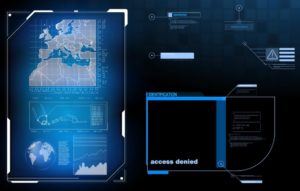
Evolving 3GPP Standards Set Roadmap for Lawful Intelligence
The evolution of telecommunication industry standards has been marked by a steady and methodical progression of revision and refinement. The gradual nature of standards development
Digital society provides a multitude of data-driven clues for analysts across law enforcement and the intelligence community. Intercepted communications content (CC) and metadata are routinely augmented
With 5G deployments ongoing and 6G some years away, 3GPP Release 18 provides an evolutionary step forward with the first 5G Advanced (5.5G) standard, enhancing performance, efficiency, and flexibility.
Controlling borders is vital to every country’s national interest, from managing immigration to preventing drug smuggling, human trafficking, and terrorism - but physical barriers are no longer enough.
In the coming years, AI is expected to dramatically accelerate the evolution of lawful intelligence, giving law enforcement agencies the ability to efficiently draw insight from data at unprecedented scale.
Quantum Computing may enable communications that do not travel across a network in the conventional sense and endanger traditional encryption methods, carrying critical implications for lawful intelligence.

The evolution of telecommunication industry standards has been marked by a steady and methodical progression of revision and refinement. The gradual nature of standards development

The transition from one year to the next is a natural time for assessment. At SS8, that appraisal helps illuminate the present state of lawful

As emerging technologies such as the internet of things and autonomous vehicles expand the scope and volume of traffic transmitted over public communications networks, new

National border crossings provide unique touchpoints for lawful intelligence operations. Controls at a country’s points of ingress and egress require travelers to present identification, submit

Mobile devices have long been capable of peer-to-peer networking using their built-in Bluetooth, Wi-Fi, and cellular radios. The technical term for this connectivity is Sidelink,

Generally, people have a greater expectation of privacy at home than in public, and rightfully so. Regulatory measures such as search warrants protect those expectations

In the past decade, there has been amazing growth in the amount of data available on individuals, their communications, and their patterns of life, but

Communication service providers (CSPs) all over the world are obligated to provide law enforcement agencies (LEAs) with customer communications data, only when its interception is

Secure provisioning, monitoring, mediation, and handover of lawfully intercepted data have long been critical considerations for Communication Service Providers (CSPs) in the design and buildout

Cell site simulators (CSS) are an important tool used by law enforcement around the world to track down fugitives, find missing persons and to investigate
THE DATA SILO DILEMMA FOR LAW ENFORCEMENT
How to Ingest, Filter and Query 5G Volumes
Webinar Presented by Kevin McTiernan